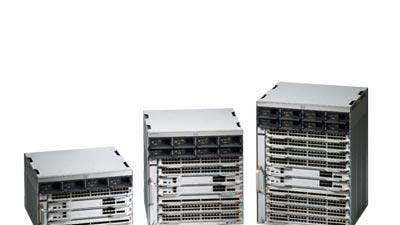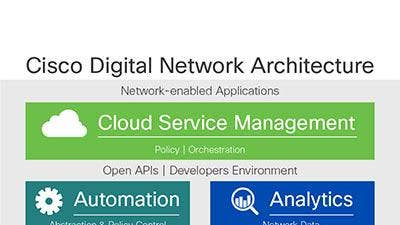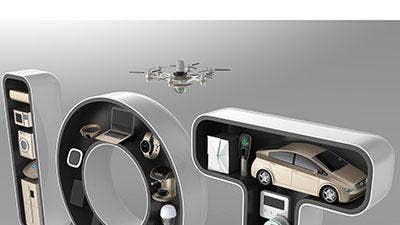10 Things Partners Need To Know About Cisco's Intent-Based Networking For IoT
Cisco's new solutions give customers better visibility into IoT systems while improving the security of IoT devices themselves.

Internet Of Things In The Network
Cisco Systems is bringing its intent-based networking technology into the IoT space with new solutions designed to help customers ease the pressure that comes with trying to meet the demands of the rapid expansion of IoT devices with limited resources.
The solutions give customers better visibility into IoT systems while improving the security of IoT devices themselves, the networking giant said. It also serves as an indication of the momentum Cisco's intent-based networking is building in the market since its launch last June. The company introduced its intent-based networking for IoT solutions today at the Cisco Partner Connection Week event in Nassau, the Bahamas.
Cisco, in a related move, is also expanding its Catalyst 9000 series of subscription-based switches, which are the foundation of its intent-based networking efforts.
"We are really saying how can we help customers, how can we provide a level of visibility into these devices and help them provide the right control of who gets control of what devices, and automate the operations of the network for managed the IoT device while providing greater insight and analytics around these devices," said Prashanth Shenoy, Cisco vice president of enterprise and IoT networking marketing.
Here are 10 things you should know about intent-based networking for IoT.

The Partner Play
Armed with the knowledge of what customers are actually trying to accomplish, partners have an opportunity to offer a wide variety of services around intent-based networking for IoT, including compliance services, and automation services. Jason Gallo, Cisco global director of partner sales, said partners should begin viewing networking as 'network-as-a-service.'
"You're really coming in with a managed service and network-as-a-service," he said. "That's what we're seeing. Partners are taking that context and that contextual data and building upon that intent-based network. The network is now able to be fine-tuned, and the partner is tuning it for the customer."

Expanding Catalyst 9000 Portfolio, New Access Points
The expansion adds models intended to provide the performance, density and speed required by IoT devices. The new switches are known as the Catalyst 9500, and include a 100G fixed configuration enterprise switch starting at $29,000 and a 25G switch starting at $21,600. The 100G model is Cisco's highest-density switch. "That provides all the scale you need in a campus environment, or in a really large-scale branch environment," Shenoy said. Cisco is also introducing a new access point, the 4800 AP, which is designed for security and location analytics in IoT environments.

Security Blanket
Bringing intent-based networking to IoT allows Cisco to give customers visibility across all their different devices. The system is based on Cisco's existing Identity Services Engine [ISE], a centralized policy engine. ISE is being expanded so it has the capability to be used across the entire IoT environment, Shenoy said. The ISE expansion is available now.

Software-Defined Access
Software-Defined Access is a simplified, automated way to manage the network as a single entity, and like ISE, Cisco is expanding it for use in IoT environments. The expansion means Software-Defined Access can provide consistent policy and consistent visibility across customers' varied environments, allowing them to automate operations. The system will now also work across a distributed campus environment, as well, Shenoy said. "We're making the network an IoT language translator," he said. The system is based on more than 600 profiles of assets types Cisco has identified for IoT.

In The DNA
Once customers have the visibility and the policies they need to make the most of their IoT environments, they have to make sure the network is enforcing those policies. They also have to be sure the network is segmented properly so the right users get access to the right devices. Now, all of that can be done through Cisco's DNA Center, where users can set, automate and enforce policy across the entire infrastructure. DNA Center's micro-segmentation also allows for threat detection and threat containment.

Analytical Insights
Based on Cisco's Connected Mobile solution, the expanded analytics capabilities help IT manage line-of-business assets. The system provides intelligence collected by the network, including location, asset tracking and asset management and turns that information into insights that businesses can monitor and use to set business rules. The solution is available now.

IoT Is Not One-Size-Fits-All
Any device that is connected to the network can now be called IoT. Security cameras, lighting systems and building management systems like HVAC are all getting connected. All of those devices aren't managed by a single entity, and that variety of entities don't necessarily talk to each other. Shenoy said Cisco's intent-based networking for IoT effort is intended to provide the "operational glue" to IoT by giving customers a consistent way to manage devices, security and visibility, which are all key barriers to adopting IoT.

IoT Is Getting Harder To Manage
The number of devices IT is tasked with managing is expanding drastically. "It used to be like one IT person per 100 or 200 devices, and now it's getting to be one IT person to 1,000 devices, and within the next two to three years they expect it to be one IT person per 100,000 to 1,000,000 devices. You cannot manually manage those IT devices," Shenoy said. "There needs to be a clear sense of automating your day-to-day operations."

Every IoT Device Speaks A Different Language
"From and operations environment, to a manufacturing environment, to a vertical-specific environment, you have hundreds of specific protocols, so we need a language translator talking to the devices and getting information to the network," Shenoy said. Intent-based networking for IoT seeks to break those barriers to identify, locate and set policy for IoT devices, allowing customers to seamlessly manage and monitor IoT environments.

Unlocking The Data
IoT devices collect a tremendous amount of data, and intent-based networking allows customers to make use of it. "It's providing visibility so you can take some real smart and fast actions," Shenoy said. Making sense of data coming into IoT devices is important for customers in several verticals, including retail, health care, manufacturing and education, Shenoy said. He singled out health care, which is embracing IoT, but could use the data to streamline clinical workflow when it comes to environmental monitoring and notification, or refrigeration. "They can protect patients and data through the segmentation of the network," he said.